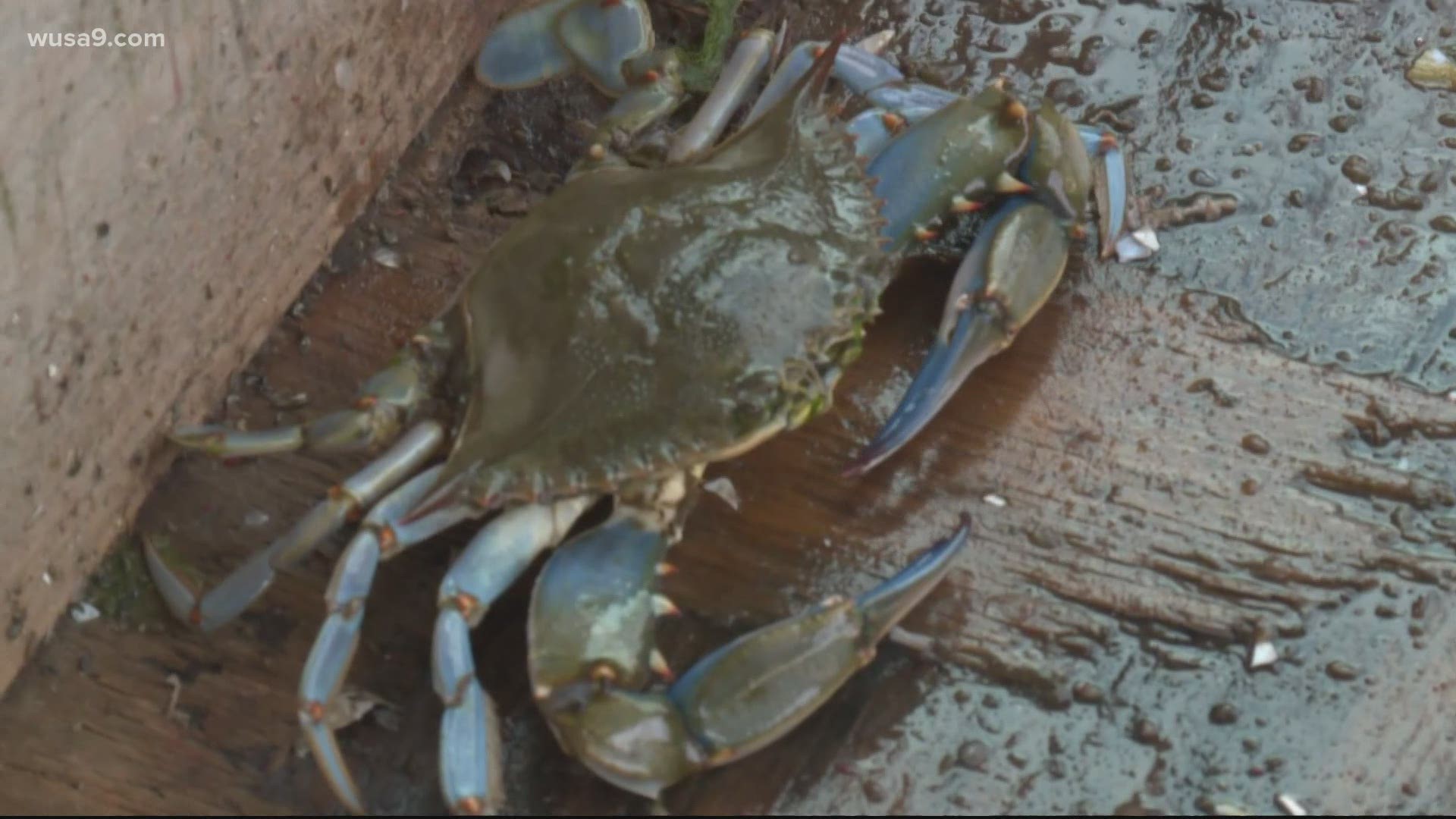ANNAPOLIS, Md. — A Chesapeake Bay scientist said Tuesday that the climate is now changing so fast, that restoring the Chesapeake to what it used to be is not a realistic possibility.
Instead, Dr. Bill Dennison, professor of marine sciences at the University of Maryland Center for Environmental Sciences said the bay will "absolutely not" be the same in the future.
“Our challenge is we have to reimagine the bay," Dennison said. "We're not trying to restore the bay to 1950 or to when John Smith explored here in the 1600s. We're talking about a future bay that is very different from the bay that we've had or the bay that we have today."
Dennison spoke to WUSA9 as UMCES released its newest annual report card on the health of the Chesapeake Bay and the surrounding watershed, which includes parts of six states.
Overall, the watershed earned a B-minus, but Ds outnumber Cs on indicators in the Bay itself. Dennison emphasized a slight upward trend in many report card indicators, but said that climate change has compounded clean-up efforts.
Most recently, he reports two years of hot spells have killed off underwater eel grasses in the lower Chesapeake, seriously damaging the nursery ground for baby crabs and putting a path to total recovery of the lower bay grass in question.
Underwater grasses scored only 33% on the UMCES scale of bay health, compared to 35% in the most recent previous report.
The poor showing for bay grasses comes as Maryland's Department of Natural resources is reporting the worst year for juvenile crab populations in the history of modern surveys.
Dennison predicts aquaculture, like a new generation of oyster farms, will be a big part of the future. He also predicts more new species like shrimp and Red Drum that are better suited to warmer climates, will move in.
Climate change can also amplify the effects of polluted runoff from the land, according to Dennison.
"One of things we're seeing is droughts punctuated by extreme events and that’s really bad for the bay," he said.
Dennison explained that those events wash extreme pulses of pollution into the water all at once.
One success story is the Anacostia River Tunnel now in operation in the District of Columbia. The 13-mile tunnel system, similar in scale to Metro tunnels, catches billions of gallons of stormwater and trash so it can be treated at Blue Plains gradually after storms.
RELATED: 3.8 billion gallons of polluted stormwater stopped from spilling in Anacostia River despite rains
The tunnel project has already reduced sewage spills by 95% at a cost of nearly $3 billion, according to Tommy Wells, director of the District's Department of Energy and the Environment.
Successes in tributary communities like Washington brought the overall environmental health of the Bay's extended watershed to a total grade of B-minus according to the latest report card. -- an improvement from a C in 2020.
This year’s report card has new indicators of watershed health, including stewardship, protected lands, walkability, and heat vulnerability, according to a press release issued with the latest report card.
“UMCES scientists continue to lead the way on assessing not just the environment, but also the social and economic factors that influence ecosystem health. This year’s report card provides new insights in our journey of restoring the Chesapeake Bay,” said Dr. Peter Goodwin, University of Maryland Center for Environmental Science. “Improvements in our environment go hand-in-hand with improvements in our communities.”
Here are a few key takeaways from this year's Chesapeake Bay report card:
- Individual indicators of Bay health had mixed results in 2020, but the overall Bay-wide trend continues to improve over time. In addition, seven out of 15 regions showed significantly improving health trends. There are not yet any known impacts of the COVID-19 pandemic on the ecosystem health of Chesapeake Bay, besides a reduction in atmospheric nitrogen, which has a declining trend, continued by reduced travel during 2020.
- For the Chesapeake Bay, dissolved oxygen and total nitrogen scores had improved, while chlorophyll and total phosphorus scores declined. Water clarity, benthic community, and aquatic grass scores had decreased slightly. Due to the pandemic, there was a monitoring gap from March to May.
- The analysis of Chesapeake Watershed health uses 23 reporting regions and incorporates both ecological and social indicators in its scores. With support from the National Fish and Wildlife Foundation, four new watershed health indicators assessed this year: Stewardship Index, Protected Lands, Heat Vulnerability Index, and Walkability. The Stewardship Index looks at actions that residents are taking to support the Bay, volunteerism, and civic engagement. The Protected Lands indicator measures the valuable lands protected in the watershed that maintain water quality and habitat; sustain forests, farms, and communities; and support cultural, indigenous, and community values. The Heat Vulnerability Index focuses on climate-safe neighborhoods throughout the watershed and includes data on tree canopy, impervious surface, temperature, and poverty. Walkability describes how many people can walk to a park in 10 minutes, which was particularly important in a pandemic year.
The University of Maryland Center for Environmental Science’s Integration and Application Network produces the annual report card which is the most comprehensive assessment of the Chesapeake Bay and its waterways. For more information, click here.
Sign up for the Get Up DC newsletter: Your forecast. Your commute. Your news.
Sign up for the Capitol Breach email newsletter, delivering the latest breaking news and a roundup of the investigation into the Capitol Riots on January 6, 2021.

